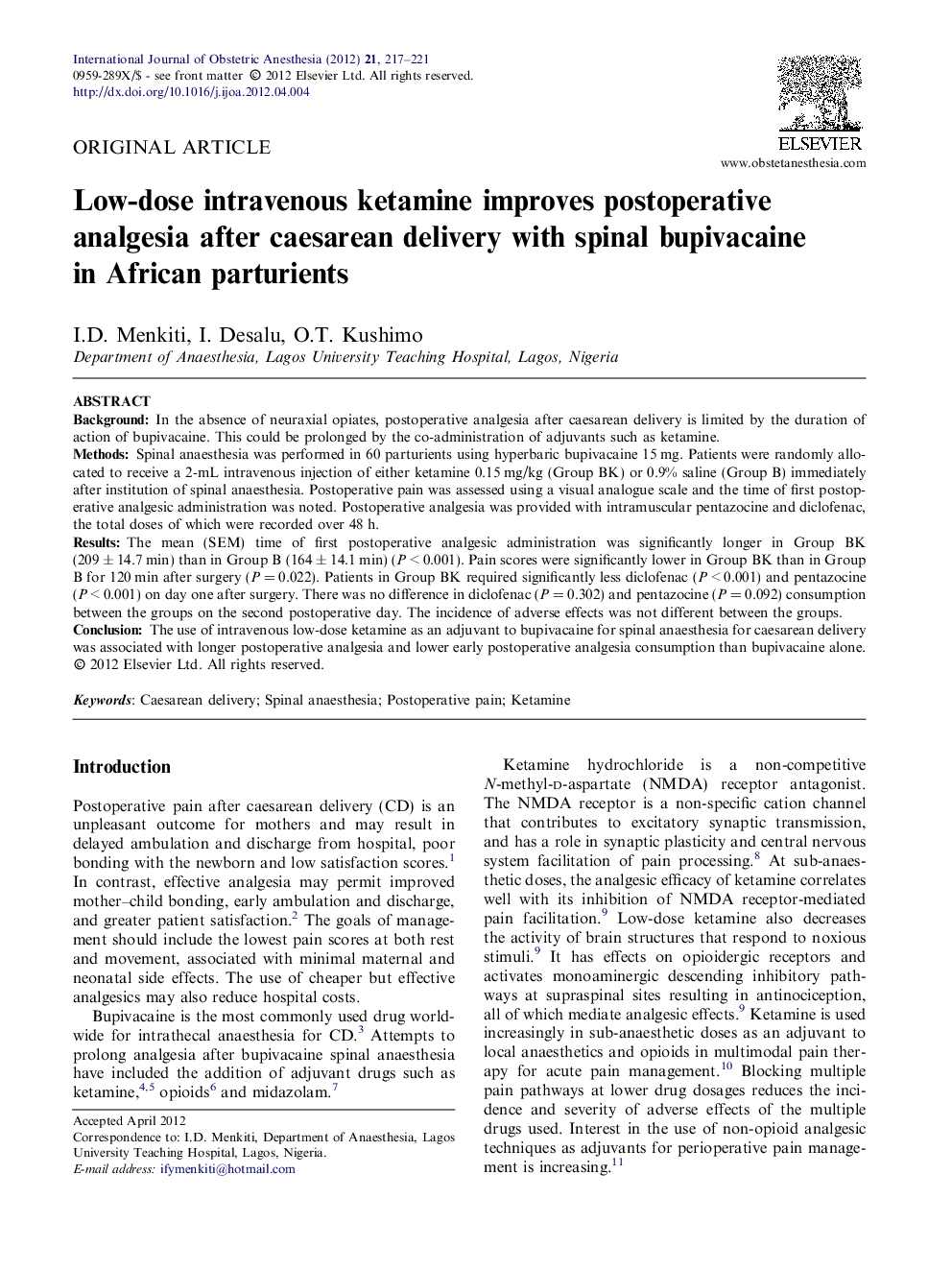| Article ID | Journal | Published Year | Pages | File Type |
|---|---|---|---|---|
| 2757605 | International Journal of Obstetric Anesthesia | 2012 | 5 Pages |
BackgroundIn the absence of neuraxial opiates, postoperative analgesia after caesarean delivery is limited by the duration of action of bupivacaine. This could be prolonged by the co-administration of adjuvants such as ketamine.MethodsSpinal anaesthesia was performed in 60 parturients using hyperbaric bupivacaine 15 mg. Patients were randomly allocated to receive a 2-mL intravenous injection of either ketamine 0.15 mg/kg (Group BK) or 0.9% saline (Group B) immediately after institution of spinal anaesthesia. Postoperative pain was assessed using a visual analogue scale and the time of first postoperative analgesic administration was noted. Postoperative analgesia was provided with intramuscular pentazocine and diclofenac, the total doses of which were recorded over 48 h.ResultsThe mean (SEM) time of first postoperative analgesic administration was significantly longer in Group BK (209 ± 14.7 min) than in Group B (164 ± 14.1 min) (P < 0.001). Pain scores were significantly lower in Group BK than in Group B for 120 min after surgery (P = 0.022). Patients in Group BK required significantly less diclofenac (P < 0.001) and pentazocine (P < 0.001) on day one after surgery. There was no difference in diclofenac (P = 0.302) and pentazocine (P = 0.092) consumption between the groups on the second postoperative day. The incidence of adverse effects was not different between the groups.ConclusionThe use of intravenous low-dose ketamine as an adjuvant to bupivacaine for spinal anaesthesia for caesarean delivery was associated with longer postoperative analgesia and lower early postoperative analgesia consumption than bupivacaine alone.
